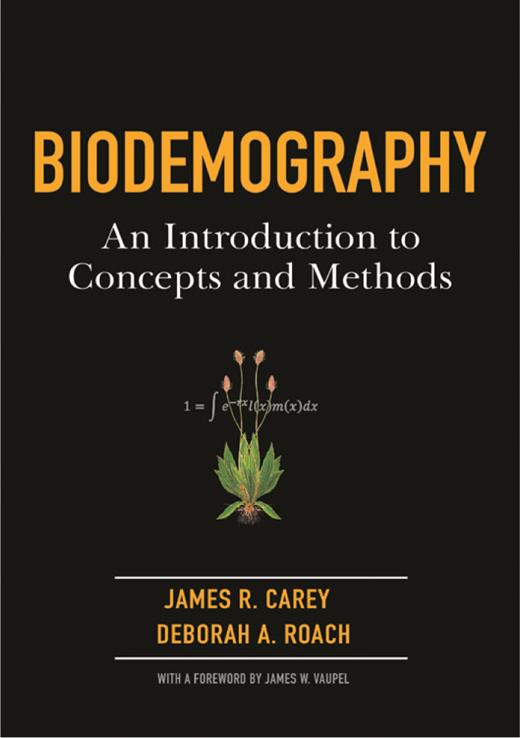
Biodemography: A Complete Video Guidebook
Released by Princeton University Press in 2020, Biodemography: An Introduction to Concepts and Methods by James R. Carey and Deborah A. Roach, available from Princeton University Press or Amazon) is the first book that fully integrates formal (human) demography methods with the demography-related literature in population biology, ecology, evolution, entomology and conservation biology. Because of the book’s scope and depth, and especially because of its interdisciplinarity, the book’s authors as well as CEDA administrators believe that its contents should be available, not only to those who have purchased the book, who have access to it through (mostly) university libraries, or who only read English. Rather they believe that the methods and concepts contained in the book should also be available to anyone interested in any aspect of biodemography regardless of their access to the book or their primary language.
“Demography is the taproot of an interdisciplinary tree containing multiple branches whose demographic topics range from health, disease, marriage and fertility to anthropology, paleontology, history, and education. Our book now adds a new branch to this tree—biodemography.”
J. R. Carey and D. A. Roach, 2020. Biodemography Preface
In response to potential limitations of accessibility Biodemography’s lead author, UC Davis Distinguished Professor and CEDA senior scholar James R. Carey, turned the book’s text into storyboarded script and its graphs, schematics, tables and equations into the content of animated slides. And with teleprompter assistance, he narrated and video-recorded a total of 175 separate presentations totaling over 12 hours. For both ease of viewing in English as well as auto-subtitling in 300 languages, Professor Carey hired a four-person team of UC Davis undergraduates to add closed captions. He also instructed this team to create a duplicate playlist to which they added voice-overs in AI-generated French—the second official language (besides English) of the International Union for the Scientific Study of Population (IUSSP).
Complementarity of Textbook and Video
The links to the Biodemography video playlist posted here provide worldwide access to virtually all of the book’s content. And for those who have access to the book the videos also complement and extend most of the demographic subject matter. This complementarity can be better appreciated by comparing the characteristics and attributes of content presented in the two mediums—textbook versus video. Besides the main narrative, books may also include side bars, worked examples, large tables, and hundreds of references. Readers can scroll, scan and peruse the book’s contents as well as add notes, bookmark pages, and highlight text. In contrast video presentations can include the image and voice of presenters (e.g., authors) as well as slide animations designed to enhance viewer engagement. Unlike books video content can be easily added or updated and as well as both closed captioned and foreign language subtitled.
Persons having access to the same material presented both in a textbook and in videos can experience a synergy and complementarity of learning since neither medium alone delivers the same content identically. Thus the cross-media learning experience is much richer and more engaging, enduring and, indeed, enjoyable than that for either of the single-media experiences alone. One example of this enhanced learning experience in Professor Carey’s playlist is inclusion of “video appendices” that follow several of his presentations. These include clips he recorded on trips to Africa involving various aspects of the biodemography of selected species used as case studies in his book (e.g., African elephants, mountain gorillas) as well as short segments from talks he has presented that are both relevant and complementary to the book section covered.
6.4 Leslie and Lefkovitch models
7.4 Hierarchical models
9.10 Age structure estimation
The following are links to the YouTube playlists that group videos from across the collection into useful categories.
Entomology and insect-related content
Ecology and conservation biology